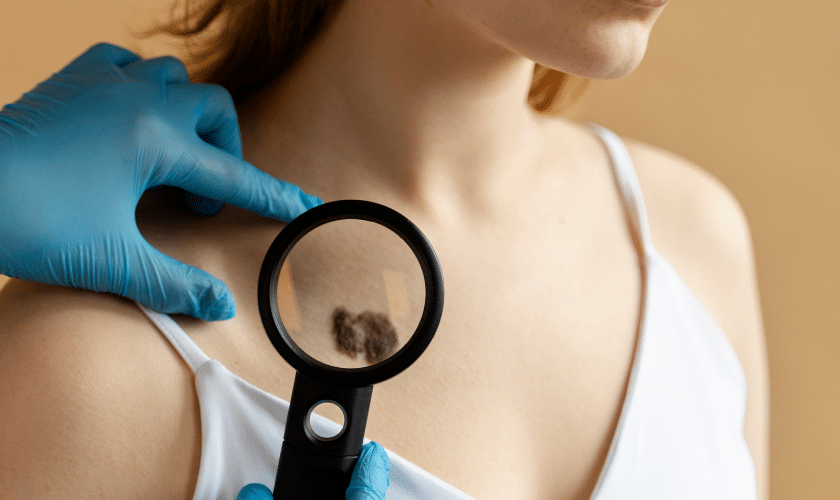Facing a skin cancer diagnosis can be daunting, but advancements in medical science have paved the way for highly effective treatments. Among these, Mohs surgery stands out as a gold standard for treating certain types of skin cancer. In this comprehensive guide, we’ll delve into essential information for patients, unraveling the mysteries of Mohs surgery and providing insights into its procedure, benefits, and what patients can expect during their journey toward skin cancer recovery.
Exploring Skin Cancer:
Before diving into Mohs surgery, it’s crucial to understand the landscape of skin cancer. Skin cancer is a prevalent and diverse group of diseases characterized by the uncontrolled growth of skin cells. The two most common types are basal cell carcinoma and squamous cell carcinoma, while melanoma is a more aggressive form. Prolonged exposure to ultraviolet (UV) radiation from the sun or artificial sources is a primary factor contributing to the development of skin cancer.
Mohs Surgery: A Precision Approach:
Mohs surgery has revolutionized the treatment of skin cancer. What sets Mohs surgery apart is its precision and effectiveness in removing cancerous cells while preserving as much healthy tissue as possible. This approach is particularly crucial for areas where preserving both function and aesthetics is paramount, such as the face.
The Mohs Surgery Process:
Tissue Removal: Mohs surgery begins with the removal of the visible tumor. Unlike traditional excision methods, only the minimal amount of tissue necessary is excised, reducing the impact on surrounding healthy skin.
Layer-by-Layer Examination: The excised tissue is divided into sections, and each layer is meticulously examined under a microscope. This process allows the surgeon to identify and map out any remaining cancer cells.
Precise Tumor Removal: The surgeon repeats the process layer by layer until no cancer cells are detected. This precision is particularly advantageous for tumors with irregular shapes or those located in cosmetically sensitive areas.
Preservation of Healthy Tissue: Mohs surgery excels in preserving healthy tissue, ensuring minimal scarring and better cosmetic outcomes. This is especially crucial for skin cancer on the face or other visible areas.
Advantages of Mohs Surgery for Patients:
High Cure Rates: Mohs surgery boasts some of the highest cure rates for skin cancer, exceeding 90% for certain types. The meticulous examination of tissue layers ensures that no cancerous cells are left behind.
Tissue Preservation: By selectively removing only cancerous tissue, Mohs surgery minimizes the loss of healthy skin. This is particularly vital for areas where preserving function and appearance is paramount.
Cosmetic Outcomes: The precision of Mohs surgery results in superior cosmetic outcomes compared to traditional excision methods. It is especially beneficial for skin cancers on the face, neck, and other visible areas.
In-Office Procedure: Mohs surgery is typically performed on an outpatient basis in a dermatologist’s office. Patients can often undergo the procedure and recovery in a single day.
Real-Time Assessment: The layer-by-layer examination allows for real-time assessment of the tumor margins, ensuring that the surgeon can immediately address any remaining cancer cells.
Conditions Suitable for Mohs Surgery:
While Mohs surgery is highly effective, it is typically reserved for specific situations, including:
Recurrent or Large Tumors: Mohs surgery is particularly beneficial when dealing with tumors that have recurred after previous treatment or those that are larger.
Cosmetically Sensitive Areas: Skin cancers on the face, neck, hands, and other cosmetically sensitive areas benefit from Mohs surgery’s ability to preserve healthy tissue and minimize scarring.
Aggressive or Ill-Defined Tumors: Tumors with aggressive features or ill-defined borders are well-suited for Mohs surgery, where the surgeon can precisely identify and remove cancerous cells.
High-Risk Types of Skin Cancer: Certain types of skin cancer, such as basal cell carcinoma and squamous cell carcinoma, especially those at high risk of recurrence, respond exceptionally well to Mohs surgery.
Patient Experience and Recovery:
Understanding what to expect during and after Mohs surgery is crucial for patients. The procedure itself is generally well-tolerated, and patients can usually resume their daily activities afterward. While some discomfort or swelling may occur, it is generally minimal, and the meticulous removal of cancerous cells contributes to a quicker recovery.
Follow-up care is an integral part of the process. Patients will attend regular check-ups to monitor the healing process, assess for any signs of recurrence, and receive guidance on sun protection to prevent future skin cancers.
Navigating Mohs surgery as a skin cancer patient involves understanding the procedure, its advantages, and the conditions for which it is most suitable. Mohs surgery stands as a beacon of hope, offering not only high cure rates but also a commitment to preserving the natural beauty of the skin. As patients begin this journey, armed with knowledge and guided by skilled medical professionals, they can approach Mohs surgery with confidence, knowing that they are taking a significant step toward skin cancer recovery with both efficacy and aesthetics in mind.

